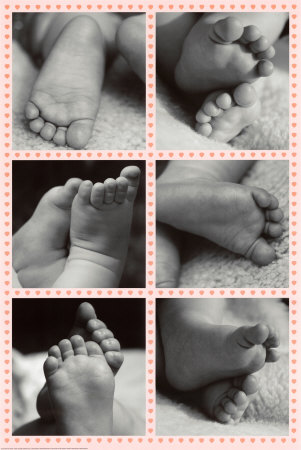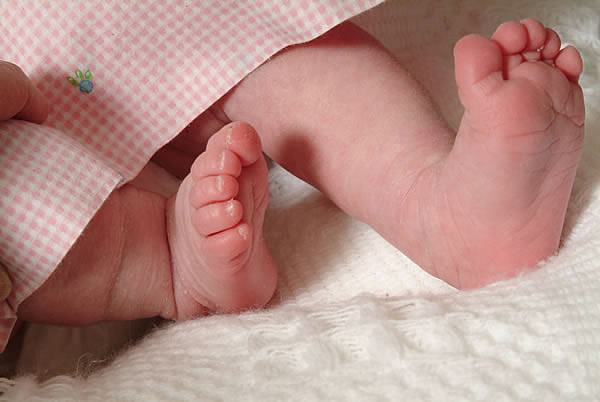Winter's Web
/I have so many blog posts I'd love to share, but you know what they say, "If you want to get something done, give it to someone who is already busy." I guess I wasn't busy enough! It will all have to wait for the new year.
In the meantime, I read The Body Has a Mind of It's Own, by Sandra Blakeslee. This is a marvelous book. It has no footnotes, which is a big drawback, but it summarizes the scientific literature on body mapping. This is not Body-Mapping the "therapy" I posted about a week or so ago, it is body mapping the theory that there are about 15 different three dimensional maps of space, motion, sensation, and awareness in our brain. Basically we know about the 15 different maps because researchers have been studying the weird stuff that happens to people when they get brain injuries. Years ago Oliver Sachs wrote the book The Man Who Mistook Her Wife for a Hat, and described the process, but a lot has happened since then.
If you want to explain Qi in scientific terms this is the way to go. Body maps, as metaphors, are a bit confining. I don't really think all 15 or so mechanisms should be called maps, and maybe none of them should, but the mechanisms by which Qi, Jing, and Shen can operate in a "quiet body" "active mind" situation have all been roughly sketched out in this book.
So I've started on a new project to become conversant in Kinesiology. I'm reading papers and books, and I'm even working on a paper with Josh Leeger whose blog covers the really interesting edge of new "fitness" experiments.
Speaking of which, the paper I wrote for the conference on Daoism Today about Martial Arts, Theater and Ritual has gotten enough positive feedback from the few readers I gave it to, that I'm going to put some real effort into publishing it. When I get back.
Also, I'm really hoping I can pull together a self-produced class for kids (ages 7-13) after school in the space I'm renting on Geary Street. Tentative start date in February.
Speaking of the space (5841 Geary St.), My Tai Chi and Qigong class there has been going great, feel free to drop in on us when we start up again Jan. 5th 2011.
I'm going to be taking over the renting and scheduling of the space, so if you want to rent it for classes or rehearsals of any kind, drop me a line, it's bright with mirrors, wood floor, and low cost.
And my morning Bagua Class will be open for new students beginning Jan 4th. 2011 so come on down and check out the funnest exercise in the world!
_____________________
Since people look to me for expertise in the realm of horror films, here is my quick review of Black Swan:
(I'm probably the only one who is going to tell you what this film is about so be sure to hit the "Donate" button in the side bar if you are digging this blog.) Black Swan is about the conflict between technique and expression. A theme martial artists will totally dig. There isn't really any fighting in this film which is crazy, how can they make a film without fighting? Anyway, the film does a great job diving into the nightmare of having awesome skills that everyone recognizes and yet still not being able to dance (martial artists can replace the word fight with the word "dance" in that sentence if they want to). I loved it, anyone who has ever been consumed by "a practice" will relate. (Full disclosure: I closed my eyes whenever the nail clippers came out! Some things are even too much for me.)
_________________
If you missed the Kung Fu For Philosophers article in the New York Times, check it out. My first thought, "hey, dude, I could teach that class." In my class each week I would send half the class home with a different philosopher to study and digest. The next week when they returned we would pick two students to get on stage and fight. Richard Rorty verses Charles Taylor one week, Zhuangzi verses Spinoza the next. The students would have to fight and argue at the same time! If a student got tongue tied or beaten down, we'd put in a fresh one to keep the action rolling. (In the article the writer gets Zhuangzi wrong. Zhuangzi says uncertainty is real. The experience of uncertainty is real too. The "transformation of things" is not something to "go along with," it simply is. We are imaginational beings-- as much butterfly as man from one dream to the next.) If you would like me to teach this class post a comment!
I'll be back January 1st, 2011.



 The Laundry Warrior is the correct and original name of a new movie which just came out under the bland title
The Laundry Warrior is the correct and original name of a new movie which just came out under the bland title  The fight choreography is good and the love interest part of the story is as good as it gets. Did I mention that the clothes are amazing? Oh yeah, the fights are mostly with swords, a little old-school Zatoichi technique and a little slow motion computer animation like the movie 300. The Koreans can all jump really high, especially out of water, it is almost like flying but they seem to come down hard. This style of fantasy fighting is cool and can really work but they really should consult me on the nature of momentum. The best fighters in the world, cats, do fight in the air! But cats must spiral and twist. Cats use rotational momentum combined with maximum internal power to fight. The films fighters rely too much on force generated from turning around a vertical center-line. Folks, if you are going to spend millions of dollars on an international project that employs people from Korea, Japan, the US, New Zealand, India and Australia--then I demand perfection!
The fight choreography is good and the love interest part of the story is as good as it gets. Did I mention that the clothes are amazing? Oh yeah, the fights are mostly with swords, a little old-school Zatoichi technique and a little slow motion computer animation like the movie 300. The Koreans can all jump really high, especially out of water, it is almost like flying but they seem to come down hard. This style of fantasy fighting is cool and can really work but they really should consult me on the nature of momentum. The best fighters in the world, cats, do fight in the air! But cats must spiral and twist. Cats use rotational momentum combined with maximum internal power to fight. The films fighters rely too much on force generated from turning around a vertical center-line. Folks, if you are going to spend millions of dollars on an international project that employs people from Korea, Japan, the US, New Zealand, India and Australia--then I demand perfection! Now to the important stuff. Every little kid knows that the outfit, the kung fu or karate uniform, is a key component of the art. I often hear parents tell me, "My son really wanted to do kungfu and begged me for a long time, but when I finally signed him up and he started taking classes I realized what he really wanted was the outfit not the hard work!" Kids get shamed about this pretty early. They are told that the uniform is just a vain symbol and that what really matters is doing forms. Later they shame you about that and tell you that it's not the forms it's the applications and techniques that matter. And if you make it that far you are likely to get shamed about those too, sparring and competitions are what really matter! And if you make it through all that it's all about philosophy and health. It took me many years to realize that the observations of little kids were correct all along. The power is in the outfit!
Now to the important stuff. Every little kid knows that the outfit, the kung fu or karate uniform, is a key component of the art. I often hear parents tell me, "My son really wanted to do kungfu and begged me for a long time, but when I finally signed him up and he started taking classes I realized what he really wanted was the outfit not the hard work!" Kids get shamed about this pretty early. They are told that the uniform is just a vain symbol and that what really matters is doing forms. Later they shame you about that and tell you that it's not the forms it's the applications and techniques that matter. And if you make it that far you are likely to get shamed about those too, sparring and competitions are what really matter! And if you make it through all that it's all about philosophy and health. It took me many years to realize that the observations of little kids were correct all along. The power is in the outfit! Adults think they are more savvy. They are less likely to be 'fooled' by an ethnic costume. But growing a beard doubled my credibility teaching at the college level. Imagine what a couple of inches in eyebrow length could do? What you wear and how you wear it has a profound effect on teaching. Clothing conveys ones degree of seriousness, whimsy, toughness, or irony better than anything which can be said or written on a white board.
Adults think they are more savvy. They are less likely to be 'fooled' by an ethnic costume. But growing a beard doubled my credibility teaching at the college level. Imagine what a couple of inches in eyebrow length could do? What you wear and how you wear it has a profound effect on teaching. Clothing conveys ones degree of seriousness, whimsy, toughness, or irony better than anything which can be said or written on a white board.
 I almost always avoid politics on my blog, most of what we call politics is simply too shallow to warrant any overlap with the general topic of this blog. I also do my best to avoid seeming rude, rudeness in other people often turns me off, why would I subject my readers to that? But I'm going to make a small exception for a big issue. (Exceptions prove the rule, right?)
I almost always avoid politics on my blog, most of what we call politics is simply too shallow to warrant any overlap with the general topic of this blog. I also do my best to avoid seeming rude, rudeness in other people often turns me off, why would I subject my readers to that? But I'm going to make a small exception for a big issue. (Exceptions prove the rule, right?) It is a staple of Chinese movement and religious studies that the tongue should be on the roof of the mouth. In Daoist ritual and ritual meditation the tip of the tongue is sometimes used to draw talisman on the roof of the mouth. But in Zouwang (sitting and forgetting) the basic emptiness meditation practice, which is very much like Zen, part of the posture instructions for stillness include putting the tip of the tongue on the roof of the mouth behind the teeth. I’ve also heard people say to put the tongue on the soft pallet. The identical instruction is standard in Tai Chi and other internal martial arts and qigong classes.
It is a staple of Chinese movement and religious studies that the tongue should be on the roof of the mouth. In Daoist ritual and ritual meditation the tip of the tongue is sometimes used to draw talisman on the roof of the mouth. But in Zouwang (sitting and forgetting) the basic emptiness meditation practice, which is very much like Zen, part of the posture instructions for stillness include putting the tip of the tongue on the roof of the mouth behind the teeth. I’ve also heard people say to put the tongue on the soft pallet. The identical instruction is standard in Tai Chi and other internal martial arts and qigong classes. Much of learning in traditional Chinese martial arts involves re-imagining. A subset of learning involves re-naming. The purpose of re-naming is to re-imagine a process or practice you are already familiar with. We could speculate that the imagination has a built in deterioration and mutation mechanism for anything which has become fixed. The imagination requires regular refreshing to function properly.
Much of learning in traditional Chinese martial arts involves re-imagining. A subset of learning involves re-naming. The purpose of re-naming is to re-imagine a process or practice you are already familiar with. We could speculate that the imagination has a built in deterioration and mutation mechanism for anything which has become fixed. The imagination requires regular refreshing to function properly.
.jpg)



